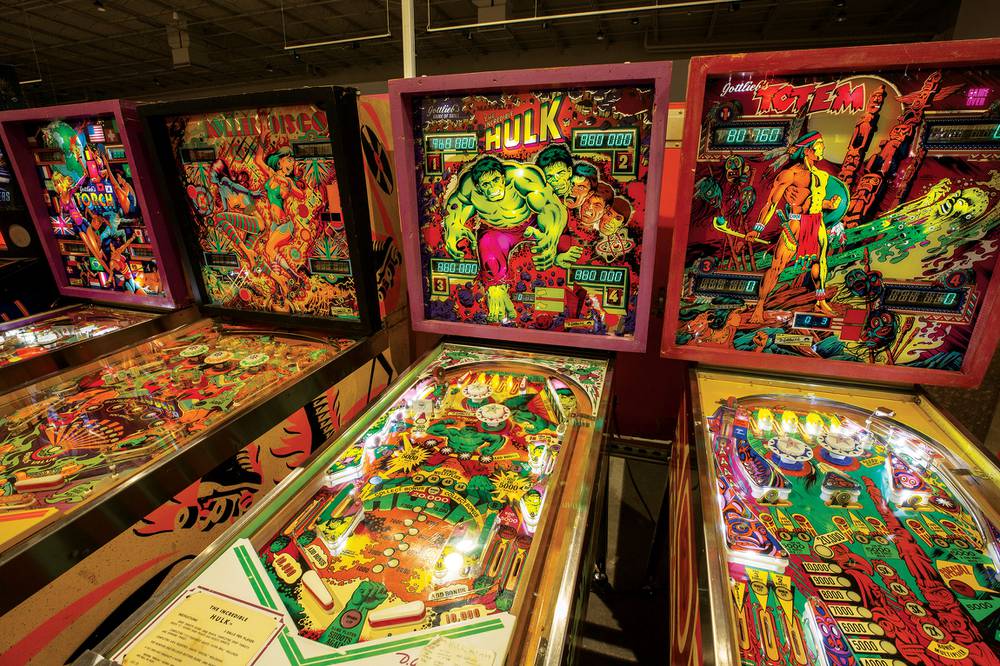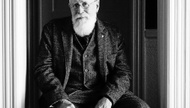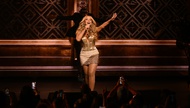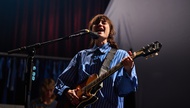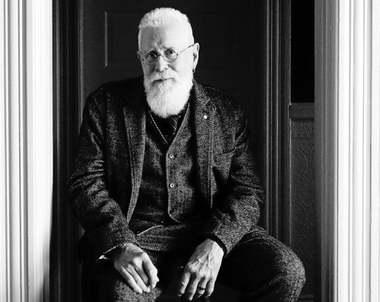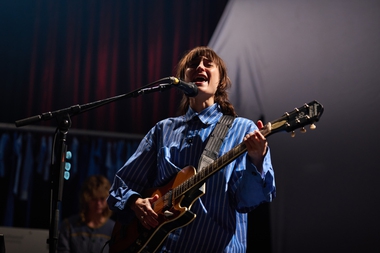"Is there really pinball in there?”
A woman, still in her car, asks me that question as I walk through the parking lot of the new Pinball Hall of Fame location, on Las Vegas Boulevard near Mandalay Bay. She gestures to the building, painted with massive red letters shouting “PINBALL.”
“There are literally hundreds of pinball machines in there,” I tell her. “Some of them are 60, 70 years old, and you can play all of them.” Satisfied, the woman parks, gets out of her car and hustles inside.
Tim Arnold, the owner of the Pinball Hall of Fame and its sprawling assortment of new and vintage pinball machines, video arcade games and various mechanical amusements, has seen several impulsive visits like this one since the PHOF soft-opened in its new location less than a month ago. “We had a guy two nights ago who was up in an expensive restaurant on the top of the Mandalay Bay, looked out the window and saw ‘PINBALL,” finished his meal and scooted right over here,” Arnold says. “And another one saw it from the window of a plane when the high winds changed [McCarran’s] approach pattern.”
It’s hard to imagine that there are people who don’t know about the PHOF—it’s been in the first tier of Vegas’ word-of-mouth attractions for years now—but nevertheless, a huge, uninitiated audience is out there, and it makes sense that Arnold would want it to find his collection. That’s the main reason he built a new, 27,000-square-foot location from the ground up on one of America’s most expensive thoroughfares. (“We’re half a million dollars behind, paying for this happy shack,” Arnold says, despite a GoFundMe campaign that had raised more than $170,000 at press time, and a separate donation of $80,000 from another supporter.)
He’s doing it because, through nearly 15 years of offering access to his collection through invitation-only “pinball fun nights” and two nondescript Tropicana Avenue locations, he’s never had enough space.
“We had about 250 machines out; now we’re at about 400 to 450, and we have many more to bring in,” Arnold says. “There’s stuff here that I haven’t seen since I put it in that storage building 30 years ago. … I got a bunch of really nice old pitch-and-bat baseball games, early mechanical fortune tellers, driving games with moving glass plates, just weird old stuff.
“It wasn’t an economic decision,” he continues. “We would probably make more money staying on Trop. But I’m not going to be able to keep doing this forever. What’s the point of having all this [stuff] unless, at least once in your life, you throw the doors open and it’s all here?”
Wandering the long, long aisles of the new PHOF—still entirely staffed by volunteers—is a head-spinning experience. All of the museum’s classic pinball machines made the move: 1980’s “Black Knight,” 1993’s “Twilight Zone,” 1975’s Spanish-made “Impacto,” 1976’s Elton John-themed “Capt. Fantastic” and 1994’s incredibly rare, only-two-in-existence prototype “Pinball Circus” are all here, and all playable for a pinch of quarters. They stand alongside recently built machines based on pop culture franchises like Deadpool, Guardians of the Galaxy and The Munsters. (The latter machine, a hyper-responsive game with a split-level playfield, is my new favorite.)
Fans of arcade games will find scores of them lining the walls, from popular favorites like “Tron” and “Paperboy” to obscure titles like “Wacko” and “Computer Space.” And Arnold wasn’t kidding about the weird old stuff: To the right of the front doors are two 1962 “Disneyland Toy Factory” Mold-A-Rama vending machines, which, when returned to service, will produce wax figures of Donald Duck and Pluto on demand.
Those Mold-A-Rama machines will have to wait their turn. As we talk, Arnold’s all-volunteer crew is busily assembling some machines and dissecting others, steadily moving PHOF toward that 400 working-machine goal. “Because there are no qualified technicians, it’s going to take a while to get to that number,” he says. “There’s a limit of how many hours I’ve got in a day, and I just can’t go out and hire people. They just don’t exist. But if it was easy, there would be one of these on every street corner.”
Even though the new space is bigger and in a more prominent spot, Arnold’s not keen to change what’s been working for the PHOF since the mid-aughts. There will no DJ nights here, no consumption lounges set up. (“[No] grass, vape or chew,” warns a sign at the door.) He doesn’t want to serve food or drinks, and is offering T-shirts only reluctantly.
“The problem is if you start paying attention to that stuff, you don’t pay attention to the games—and then your quality slips, and people don’t like it,” he says. “We want to do only two things and do them well: be a pinball museum open to the public with free admission and free parking, and give money to local social service charities, which we haven’t done for several years, because we’ve been stuck in this real estate hamster wheel.
“We’re all about the bottom of the entertainment pyramid,” Arnold says. “The very wide bottom of mom and pop, the kids, the casual player and people just looking for something to do before they hop on the freeway. Those are our peeps.”
Pinball Hall of Fame Daily, 11 a.m.-9 p.m. 4925 Las Vegas Blvd S., pinballmuseum.org.
Click HERE to subscribe for free to the Weekly Fix, the digital edition of Las Vegas Weekly! Stay up to date with the latest on Las Vegas concerts, shows, restaurants, bars and more, sent directly to your inbox!
